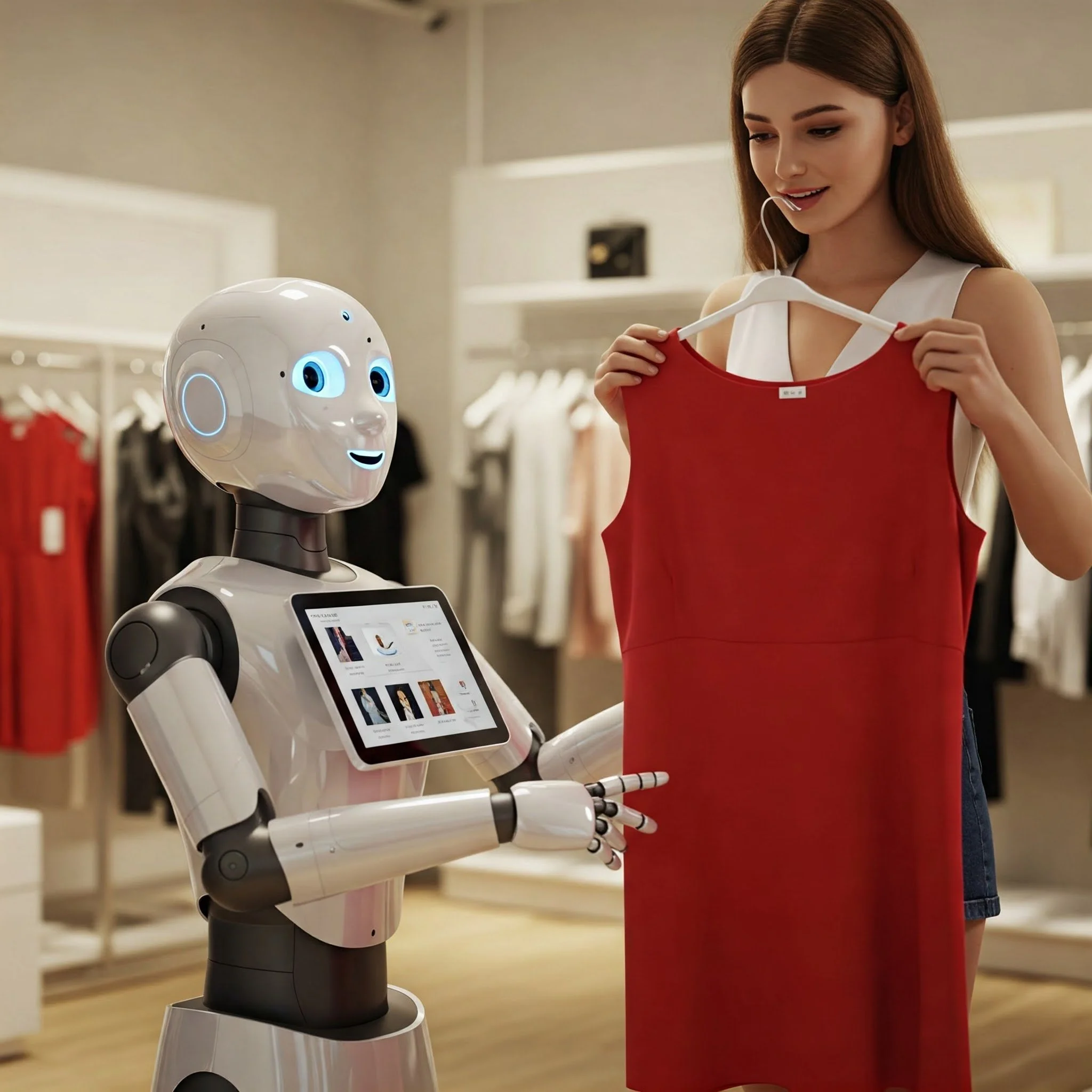From Shopping Carts to Smart Carts: How AI is Rewriting Retail
Remember the days when shopping meant wandering aisles, hoping to stumble upon that perfect item? Well, artificial intelligence (AI) has entered the retail scene, turning guesswork into precision. From personalized recommendations to efficient inventory management, AI is transforming how we shop and how retailers operate.
AI's integration into retail isn't just about convenience; it's a strategic move to meet evolving consumer expectations and stay competitive in a rapidly changing market. Retailers are leveraging AI to analyze vast amounts of data, uncovering insights that drive decision-making across various facets of their operations. This includes optimizing supply chains, tailoring marketing efforts, and enhancing customer service.
Moreover, AI is enabling retailers to offer more personalized experiences. By understanding individual customer preferences and behaviors, businesses can curate product recommendations, promotions, and services that resonate on a personal level. This level of customization not only improves customer satisfaction but also fosters brand loyalty.
As we delve deeper into the realm of AI in retail, we'll explore real-life examples of how leading companies are harnessing this technology to revolutionize the shopping experience. From fashion to groceries, AI is making its mark, and the possibilities are as vast as the aisles in your favorite store.
Real-Life Examples of AI in Retail
1. Walmart’s Trend-Spotting AI
Walmart has introduced a new artificial intelligence tool called "Trend-to-Product" to accelerate the rollout of fashionable clothing items, reducing the timeline from six months to just six weeks. This initiative reflects Walmart's broader strategy to use AI to sharpen competitiveness and boost productivity amid economic uncertainty and rising tariff concerns. Andrea Albright, Walmart’s Executive Vice President of Sourcing, emphasized that this approach differs from traditional "fast fashion," aiming instead to combine quickly emerging trends with efficient, customer-focused design cycles. Walmart plans to expand the tool's usage beyond fashion, signaling a deeper integration of generative AI across product categories to enhance responsiveness and innovation. Read More.
2. Starbucks’ Personalized Perks
Starbucks is brewing more than just coffee; they're crafting personalized experiences using AI. Their AI engine, Deep Brew, analyzes customer data—like purchase history, time of visits, and preferred locations—to tailor rewards and offers. For instance, if you usually grab a latte on Monday mornings, you might receive a bonus star offer to entice you back. This level of personalization has led to increased customer engagement and higher transaction values. Read More.
3. M&S’s Wine Whisperer
Marks & Spencer has introduced an AI-powered "Wine Finder" tool to assist customers in selecting the perfect bottle. By answering a few questions about taste preferences, the tool provides personalized wine recommendations available in the customer's chosen store. This innovation aims to simplify the often overwhelming wine selection process, encouraging customers to explore new options they might not have considered before. Read More.
4. Instacart’s Inventory Insights
Instacart is enhancing its inventory tracking system with AI-powered tools like "Store View" and "Second Store Check." "Store View" allows shoppers to take videos of store shelves, which AI then analyzes to determine product availability. If an item is out of stock, "Second Store Check" prompts another shopper at a nearby store to locate and deliver the missing item, ensuring customers receive their complete orders without additional fees. Read More.
5. Old Navy’s RADAR System
Old Navy is enhancing the in-store shopping experience at 1,200 stores across the US with the introduction of RADAR, a high-tech system utilizing RFID, AI, and computer vision. This system enables real-time inventory tracking, allowing employees to quickly locate products, restock shelves, and fulfill online orders. Shoppers can expect improved service with fewer out-of-stock items and enhanced stock management. The technology aims to give store teams precision similar to that of e-commerce operations. Following successful trials, RADAR will help Old Navy prevent losses and meet customer demand without overstocking. Read More.
Prompts for Retail
Retailers looking to harness AI can consider these prompts:
"Analyze customer purchase history to recommend personalized product bundles."
Utilize AI to examine past purchases and suggest complementary products, enhancing cross-selling opportunities and customer satisfaction. For instance, if a customer frequently buys yoga mats, AI can recommend related items like water bottles or fitness apparel, creating a tailored shopping experience.
"Predict inventory needs based on seasonal trends and sales data."
Leverage AI to forecast demand fluctuations, ensuring optimal stock levels and reducing overstock or stockouts. By analyzing historical sales data and seasonal patterns, retailers can make informed decisions about inventory management, leading to cost savings and improved customer satisfaction.
"Identify peak shopping hours to optimize staff scheduling."
Employ AI to analyze foot traffic patterns, enabling efficient staff allocation during busy periods. This ensures that customers receive prompt assistance when needed, enhancing the overall shopping experience and boosting sales during peak times.
"Monitor social media for emerging product trends."
Use AI to track social media platforms, identifying trending products and adjusting offerings accordingly. By staying attuned to consumer preferences and viral trends, retailers can stock popular items promptly, meeting customer demand and staying ahead of competitors.
"Segment customers for targeted marketing campaigns based on behavior patterns."
Apply AI to categorize customers by purchasing behavior, tailoring marketing efforts to specific segments for increased engagement. For example, frequent shoppers might receive loyalty rewards, while occasional buyers could be targeted with special promotions to encourage repeat business.
AI is not just a buzzword; it's a transformative force in retail. From enhancing customer experiences to streamlining operations, AI is helping retailers meet modern demands with efficiency and flair. As technology continues to evolve, embracing AI could be the key to staying ahead in the competitive retail landscape.

